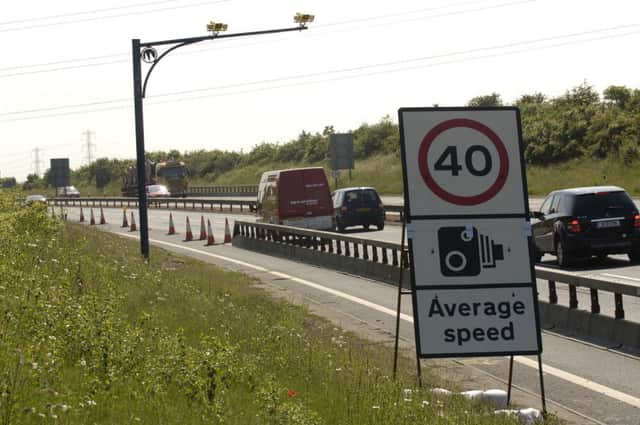Alastair Dalton: More speed limit thought required


It is as if the speed limit has deliberately been set low so a blind eye can be turned to those travelling a bit faster.
But for the law-abiding motorist, reduced speed limits through roadworks can be an even greater aggravation.
Advertisement
Hide AdAdvertisement
Hide AdRoads are often upgraded to ease bottlenecks and provide smoother surfaces to drive on, but no-one likes the pain involved from the delays and disruption they cause.
Most drivers will grudgingly accept the need for speed limits through roadworks to be lowered to help protect themselves, others on the road, and equally importantly, construction workers.
There can also be contraflows and other lane changes to navigate, and lines of cones everywhere. A further argument is that slowing traffic down helps cut congestion by reducing the “stop-start” phenomenon, where the effect of someone touching their brakes ripples back through queuing vehicles until everyone is at a standstill.
However, we need to get smarter than simply having blanket, round-the-clock lower speed limits at roadworks, regardless of how busy the road is and whether any work is actually being done.
Several miles of the M74 south from Glasgow have had a 50mph limit imposed, with the restriction starting some way north of the start of the roadworks.
Mid-morning one Sunday this month there was little traffic on the three-lane motorway, and no sign of any work taking place, either beside the carriageways or further back from the road. I don’t recall there was any need to change lane either.
If you’re a driver, you will no doubt have your own choice of similar examples from across Scotland.
The sting in the situation on the M74 was that drivers could not use their own judgment and travel at a higher speed – as I mentioned they do elsewhere – because of the virtual certainty of prosecution from the average speed cameras which had been deployed.
Advertisement
Hide AdAdvertisement
Hide AdHowever, what if the lower speed limit was lifted when no work was taking place, such as overnight?
Perhaps that would go some way to getting more drivers to respect speed limits, especially if there were signs telling them when the lower limits would operate.
The technology to enable variable speed limits is already in place on several major new or upgraded Scottish roads.
This could be used as part of the electronic displays on overhead gantries on the M74 extension into Glasgow, the M80 between Glasgow and Stirling, and the M90 on either side of the Forth Road Bridge.
The difference here with other variable speed limit signs – such as on the M8 through Glasgow – is the limits would be compulsory rather than advisory.
They would display the speed limit in a red circle, like other speed limit signs.
The Scottish Government’s Transport Scotland agency, which is in charge of the motorway network and the M74 work, said there are currently no average speed camera systems capable of enforcing variable speed limits.
Then how about speed cameras being mounted inside the gantries, like there are on several English motorways? Could greater respect for the law lead to it being better obeyed?